THE GREAT VIRGIN
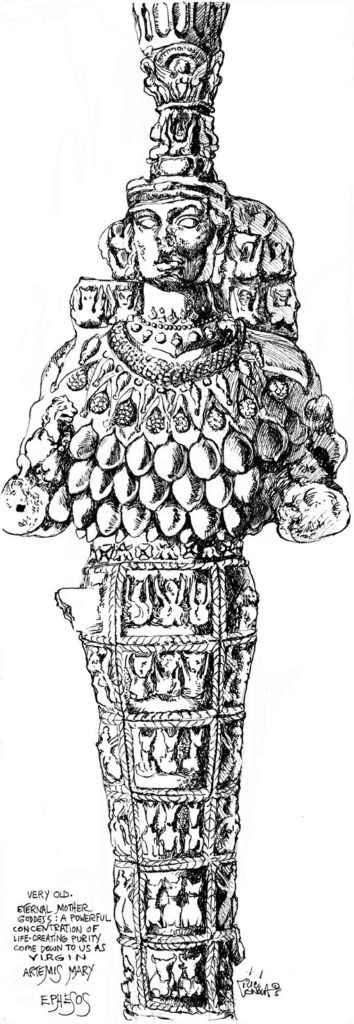
From St John’s you can see the square double-domed mosque built from stones hauled from the ruined basilica. Beyond it, in the marsh, are the remains of the Great Temple of Artemis, a wonder of the ancient world. The temple was burned in 356 BCE, the night Alexander the Great was born, by a fame-seeking madman whose name escapes me. Alexander declared that Artemis allowed her temple’s destruction because she was preoccupied with his birth, and had it restored. But as the powerful religion of Artemis lost ground to the Romans and then the Christians, the temple fell into disuse. Finished by an earthquake, it was scavenged to build St John’s, Selçuk Mosque, and a tiny bit of Hagia Sophia. Only one pillar remains, pointing to the sky. Of course there is a stork’s nest on it. Staring into the marsh with the chunks of marble, it’s easy to imaging a toadlike Marsh King down there.
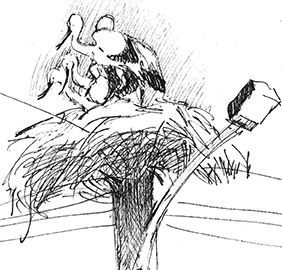
The great granite statue of Artemis now lives in the Archeological Museum at Selçuk, flanked by newer, prettier Roman versions of herself. This one is Greek, eerie and powerful in its niche around the corner from the massive marble images of Caesar Augustus and his Empress Livia, crosses hacked and burned into their foreheads, and other effluvia from Ephesus.
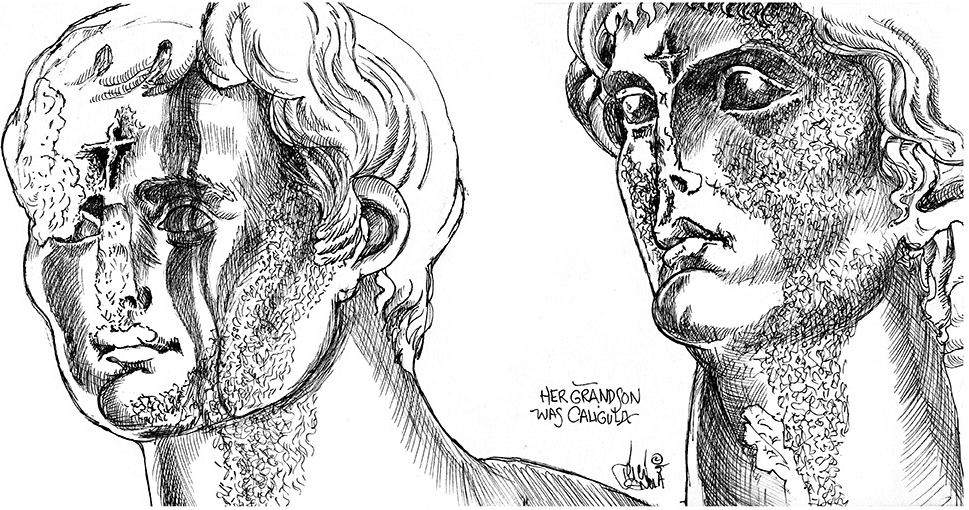
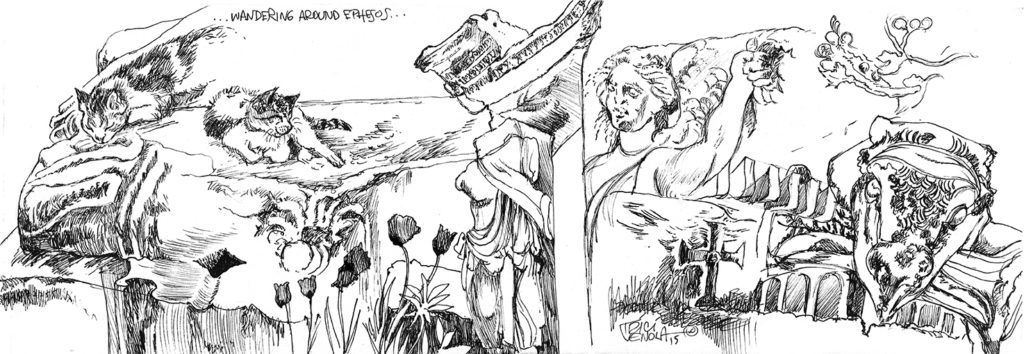
This Artemis is not Apollo’s kid sister Diana, the Virgin Huntress, Goddess of the Moon. This Artemis wears a paneled dress and high crown covered with triple images of creatures. Hunting? Hardly. Where her chest would be are masses of breasts or bull’s testicles or penises entering vaginas, depending on what you read. All represent powerful fertility. Some sources claim that the stone polyps represent the sacrifice made by her priests, who castrated themselves to serve the Goddess, echoed later by Catholic priests dedicating their manhood to the Church. I lean toward the penis-in-vagina theory: life regenerating itself in marble, representing a goddess so powerful that she could conceive by herself. Whatever the Great Mother Artemis has on her chest, she is not human. Alien, squarejawed, a tilted blank gaze and the cryptic closed smile of a Kore, a concentration of power, purity and fecundity, distilled by time and culture into Virgin Mother; Goddess of all things, beginning and end. Standing there I thought about the other local Great Virgin, Mary. Hm…Virgin Mother, moon as attribute, elements in triples, unconditional love for all living things, goddess of women, desexed priests…my spine turned to ice as I realized Whose face I was seeing. It was time to wake up Cynthia and go up the mountain.
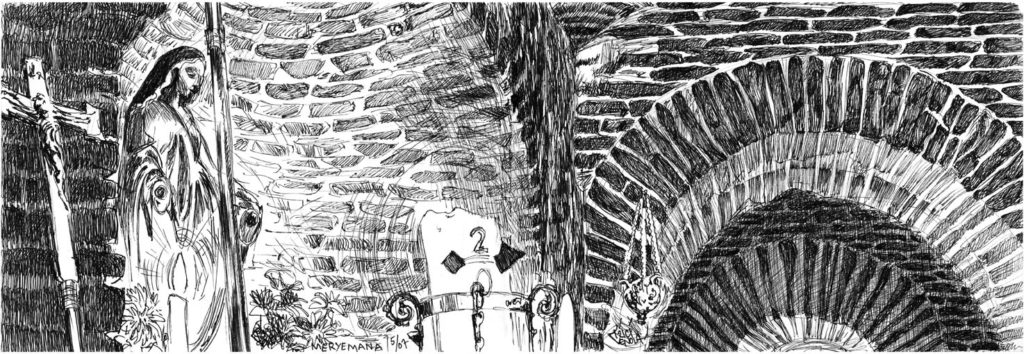
Meryemana is the house generally agreed by Muslims, Jews and the Catholic Church to have been the home of the Virgin Mary, lost for centuries and rediscovered after a nineteenth-century vision by a stigmatized German nun. Sister Mary Emmerlach’s dreams of the Virgin’s house wound up in a book. Archeologists dug where she had dreamed, and found a stone foundation on a steep slope in a grove of trees. A church was built on the old foundation. The Virgin’s attributes abound: roses and orange blossoms. Even her new moon is evident in all the Turkish flags on the trinket stands. The place is often packed, and whether or not you believe that Mary was here, millions of people who do believe it have been here, and the collective faith knocks you to your knees. Cynthia sobbed over her holywater flask, down by the wall covered with fluttering bits of paper prayers.

Apostles John and Paul were thrown out of Ephesus because their conversions were putting a hole in the silversmith trade. Nobody was buying the little silver Artemis charms anymore. Perhaps it was then that the New Virgin became the local goddess.
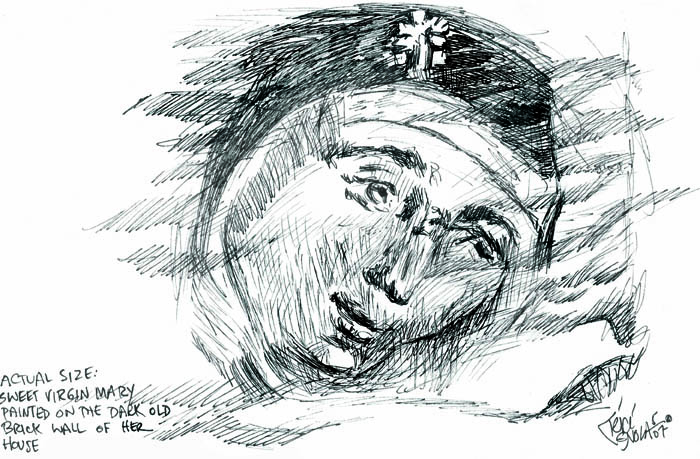
More stories: an ecumenical council in 430-something, in the 4th-century church built of her house, later her tomb. Now it’s a dark little church packed with pilgrims, an Order dressed in turquoise and blue, and many candles. Despite the crowd there is deep and pervasive peace. The altar is where the old kitchen was. On the wall in Mary’s bedroom is a naive painting, an Assumption, with a treatment I had never seen. The adult Jesus holds an infant Mary. There’s no graffiti save a little painting of her face, far down on the wall, with a little wooden frame hung around it.